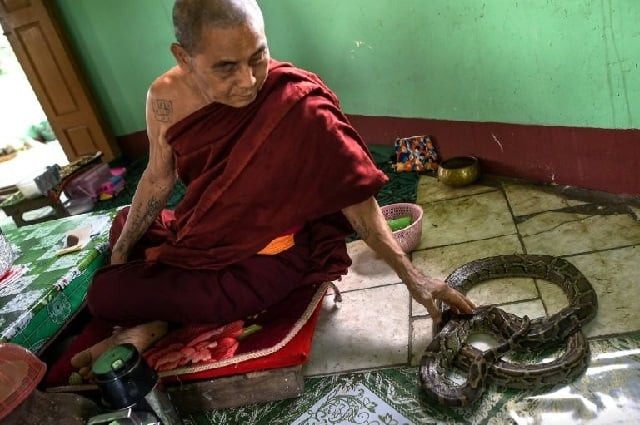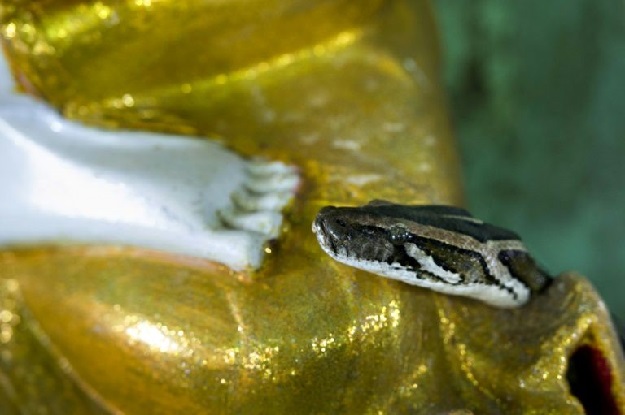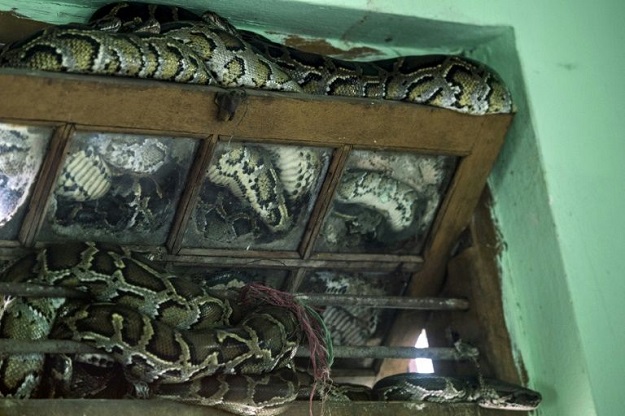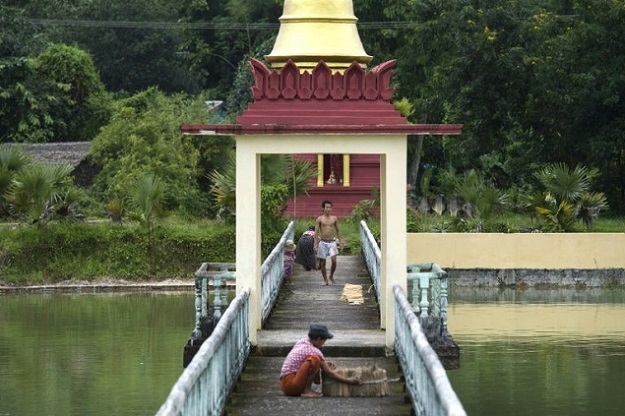Myanmar Buddhist temple now a nirvana for snakes
Mythical 'naga', a Sanskrit word for snake is a common figure seen in temples throughout Southeast Asia

PHOTO AFP
"People come here because they believe that their prayers will be fulfilled when they ask for something," said Sandar Thiri, a nun residing at the Baungdawgyoke pagoda –- dubbed the "snake temple" by locals.
"The rule is that people can only ask for one thing, not many things," she said. "Don't be greedy."
 PHOTO AFP
PHOTO AFPIn the main room of the temple is a tree with figurines of Buddha around it. The serpents move slowly through the branches, their forked tongues darting in and out as they gaze down on the worshippers prostrating themselves.
Myanmar says some Rohingya refugees returned voluntarily
Many locals regard the presence of the dozens of pythons, some measuring up to two or three metres in length, as a sign of the pagoda's power.
Win Myint, 45, said he has been coming to Baungdawgyoke since he was a child.
"Now I am older and I come to give offerings, which has made some of my wishes come true."
 PHOTO AFP
PHOTO AFPNearby, a monk dozes on a chair with two serpents curled at his feet, their thick bodies holding 1,000 kyat notes (worth about 60 US cents) tucked in between their coils by hopeful visitors. A woman, brave enough to venture close to a python, gently caresses it.
Rise of violent Buddhist rhetoric in Asia defies stereotypes
The mythical "naga" – a Sanskrit word for snake – is a common figure seen in temples throughout Southeast Asia, where Buddhist, Hindu and animist influences are intertwined. Nagas are usually carved out of stone and placed at the entrances.
But seeing a live snake slithering among Buddha statues is rare, and for some visitors, that serves as a draw to visit Baungdawgyoke — a short drive southwest of downtown Yangon.
 PHOTO AFP
PHOTO AFPWith snakes curled up next to meditating monks, the image is reminiscent of a story in Buddhist mythology when the Buddha sat under a tree to meditate.
According to the legend, as it started to rain, a cobra protected Buddha by fanning its hood wide over his head to act as a shelter.
Nay Myo Thu, a 30-year-old farmer, believes he will receive good fortune by bringing the snakes he finds in his fields to the temple instead of killing them, adhering to a Buddhist belief that all animals are sentient beings that can be reincarnated as humans.
"I don't want to bring about any misfortune by killing a creature," Nay Myo Thu said. "Catching and donating the snakes brings me good fortune instead."


















COMMENTS
Comments are moderated and generally will be posted if they are on-topic and not abusive.
For more information, please see our Comments FAQ